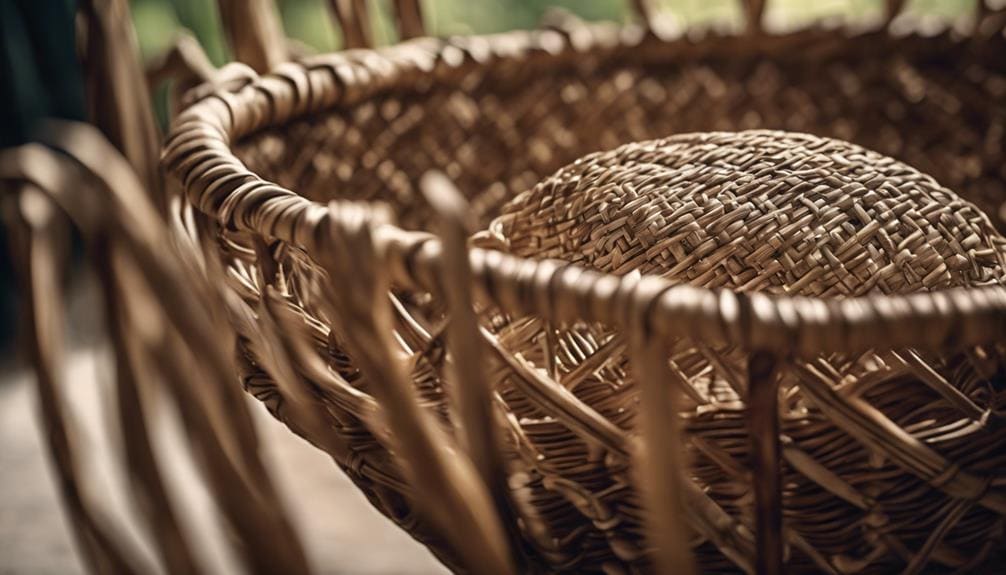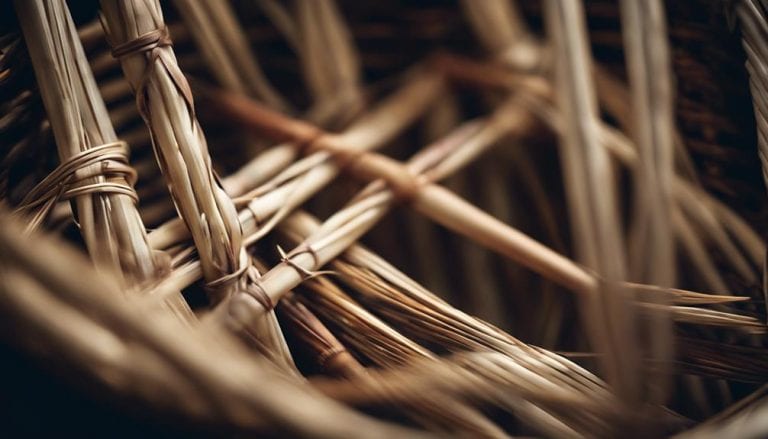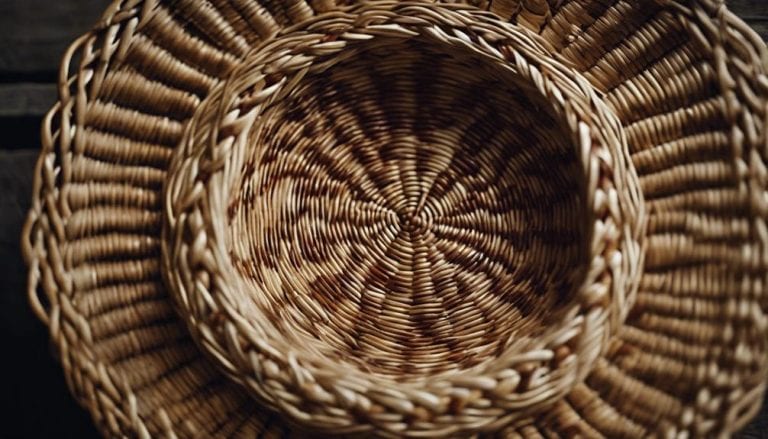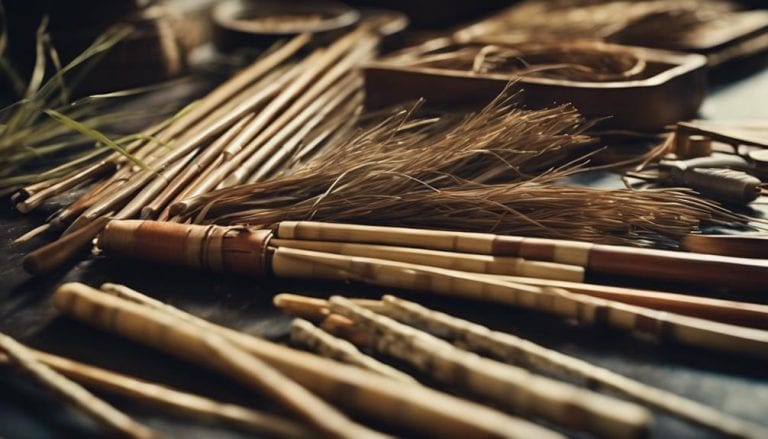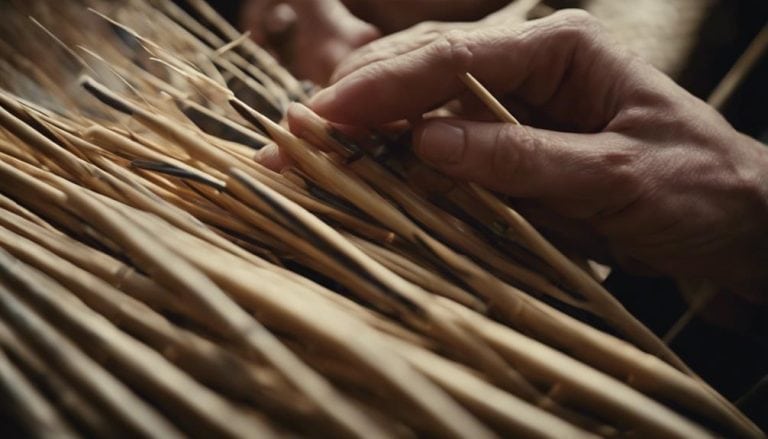Basketry: Rush Reeds and Rattan Cane
As I explore the intricate world of basketry, the intertwining of rush reeds and rattan cane reveals a timeless craft steeped in tradition and innovation. The versatility of these materials offers endless possibilities for creating functional and artistic pieces that stand the test of time. Whether you’re a seasoned weaver or a novice looking to embark on a new creative journey, the allure of working with rush reeds and rattan cane is undeniable.
Basketry uses rush reeds and rattan cane, both natural materials with unique properties, to create intricate woven designs. These materials offer flexibility and durability, making them ideal for crafting baskets and other woven items.
Key Takeaways
- Rush reeds and rattan cane offer rich historical significance and artistic value in basket weaving.
- Rattan cane provides strength and flexibility, while rush reeds allow intricate patterns and creativity.
- Sustainable and eco-friendly, rattan cane supports local economies and promotes environmental conservation.
- Regular practice and mastering weaving techniques are crucial for progressing in basket weaving.
History of Rush Reeds in Basketry
Rush reeds, dating back to ancient civilizations like Egypt and Rome, have played a significant role in the rich history of basket weaving. Their ancient origins in basketry speak to their cultural significance and enduring appeal. For centuries, rush reeds have been integral to various weaving techniques and styles across different regions. The rush plant’s flexibility and strength make it an ideal material for crafting coiled baskets, chair seating, and decorative weaving projects.
In different cultures, rush reeds have been woven into intricate patterns and designs, showcasing the diverse artistic expressions possible with this natural material. Their eco-friendly and sustainable qualities have contributed to their continued popularity among those seeking a more environmentally conscious crafting option. The art of working with rush reeds has evolved through the ages, yet the essence of tradition and skillful craftsmanship remains at the heart of this ancient practice.
Properties of Rattan Cane
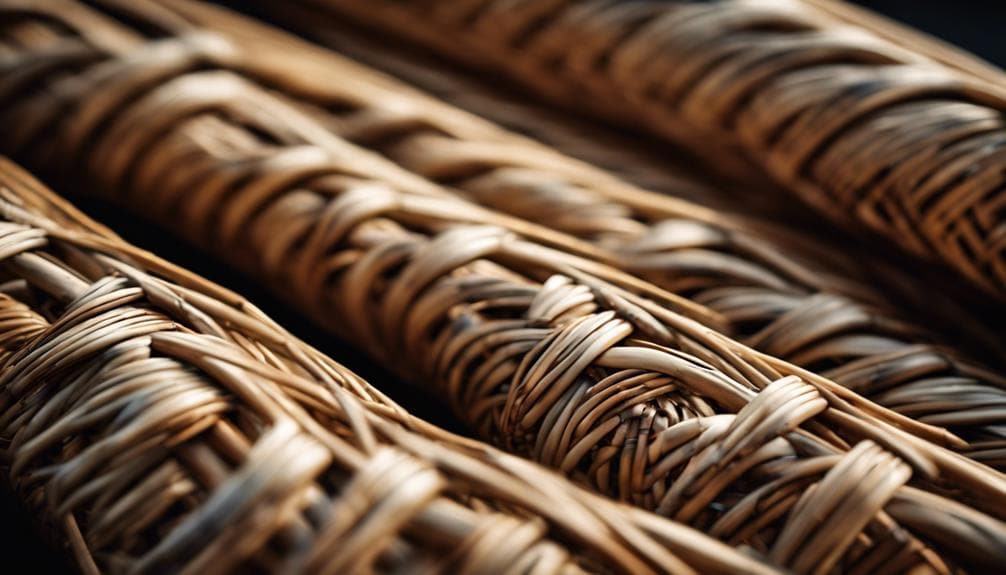
Using rattan cane in basketry and furniture design showcases its exceptional durability and flexibility. Rattan cane is a natural material sourced from the core of the rattan vine, renowned for its strength and inherent beauty.
- Strength: Rattan cane is known for its impressive strength, making it a reliable material for constructing sturdy and long-lasting baskets and furniture. Its resilience to bending and weight-bearing tasks ensures the durability of the final products.
- Flexibility: Despite its robust nature, rattan cane offers surprising flexibility. It allows artisans to easily weave intricate patterns and shapes, which is crucial in creating intricate designs and ensuring the comfort of furniture pieces.
- Variety: Rattan cane comes in various types, such as round reed, half-round reed, flat reed, and flat oval reed. This diversity allows artisans to choose the most suitable type for their weaving needs.
- Precision: Rattan cane is sold by weight (pound, hank, coil, or bundle) and is precision cut to ensure quality and consistency in each piece. This attention to detail guarantees a seamless weaving process and high-quality finished products.
Traditional Basket Weaving Techniques
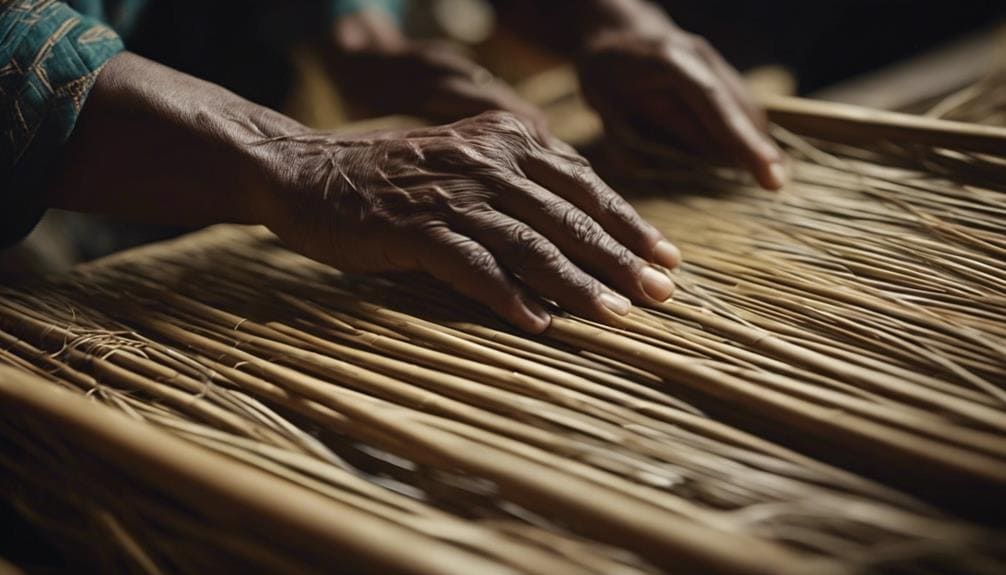
Utilizing a blend of rush reeds and rattan cane, traditional basket weaving techniques intricately weave together durability and artistic craftsmanship. Rush reeds, known for their flexibility and pliability, allow for the creation of intricate patterns in basket weaving, adding a touch of creativity to each piece. On the other hand, with its strength and durability, rattan cane provides the structural integrity needed to ensure the longevity of the baskets.
By mastering specific weaving methods and patterns, artisans can produce a variety of basket styles that showcase functionality and aesthetic appeal. Individuals can enhance their creativity and craftsmanship skills by learning traditional basket weaving techniques with rush reeds and rattan cane.
Experimenting with different weaving patterns allows for developing unique and creative designs and fosters a deeper appreciation for the artistry involved in basket making. Combining these materials and techniques results in baskets that serve practical purposes and stand as testaments to the beauty of artistic craftsmanship.
| Creative Patterns | Artistic Craftsmanship |
|---|---|
| Intricate designs | Attention to detail |
| Geometric motifs | Skillful construction |
| Nature-inspired patterns | Fine finishing touches |
| Symmetrical weaves | Precision in weaving |
| Abstract compositions | Artistic expression |
Contemporary Basketry Trends
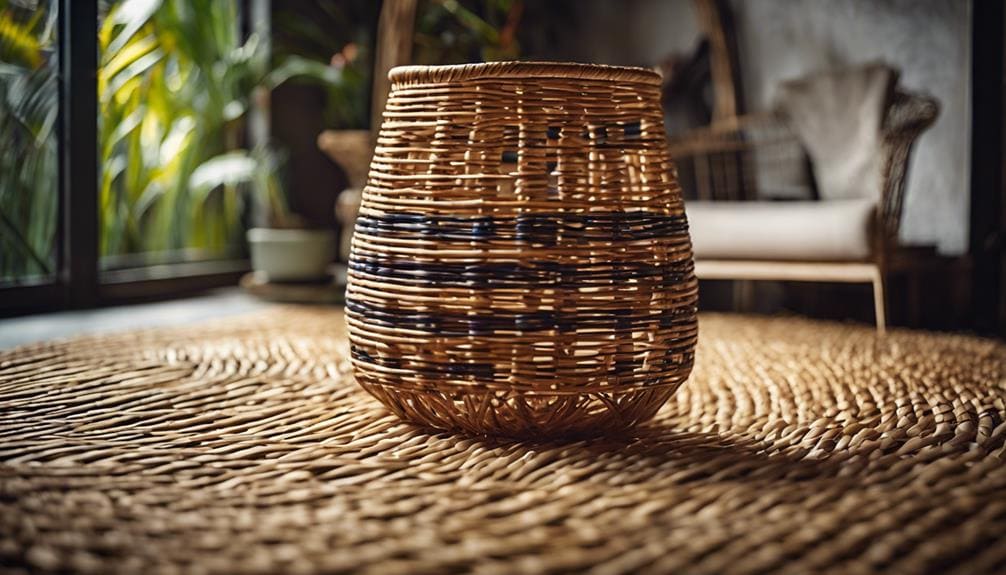
Exploring the evolution of basket weaving craftsmanship today reveals a dynamic fusion of traditional techniques with contemporary designs and sustainable materials. Contemporary basketry trends are reshaping the craft scene, with artists embracing innovative approaches that captivate audiences seeking unique and modern pieces.
Here are four exciting facets of the current basket-weaving landscape:
- Colorful Patterns: Vibrant hues and intricate designs have become signature elements in modern basketry, adding a playful and lively touch to traditional forms.
- Modern Designs: Basket weavers push boundaries with avant-garde shapes and unconventional structures, blending functionality with artistic expression.
- Social Media Influence: Platforms like Instagram and Pinterest fuel a resurgence of interest in basket weaving, inspiring a new generation of makers to explore this ancient craft.
- Accessible Learning: Workshops and online tutorials offer beginners a gateway into contemporary basket weaving, providing guidance on techniques and encouraging creativity.
Sustainability of Natural Materials
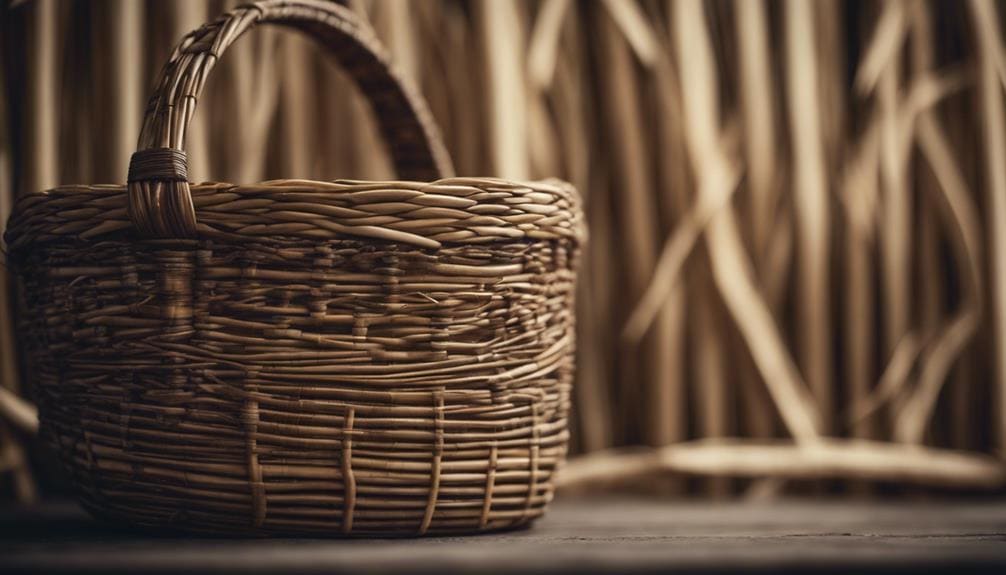
Drawing on my experience in sustainable crafting, rattan cane emerges as a key eco-friendly resource for contemporary basket weaving and furniture production. This natural material is sourced from the fast-growing rattan vine, known for its rapid growth and minimal environmental impact.
Rattan canes are biodegradable and renewable, offering eco-friendly alternatives to synthetic materials commonly used in the industry. By choosing rattan cane products, we can support sustainable sourcing practices and reduce the demand for hardwoods, thus contributing to the conservation of forests.
Additionally, rattan plantations are crucial in supporting local economies in regions where rattan is grown, providing livelihoods for communities, and promoting sustainable practices. This emphasis on community support and environmental impact makes rattan cane an ideal choice for artisans and consumers looking to create and purchase products that are beautiful and aligned with sustainable values.
Basketry as Functional Art
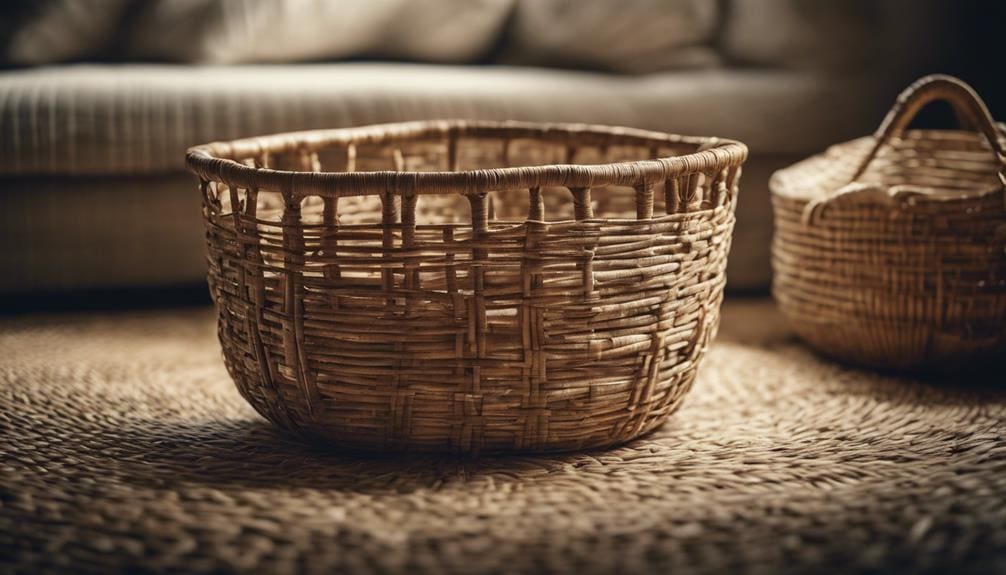
In basketry, the marriage of rush reeds and rattan cane transforms functional pieces into art.
- Artistic expression: Basket weaving with rush reeds and rattan cane allows creative expression to flourish. The intricate patterns, colors, and shapes that can be achieved through skilled craftsmanship elevate these pieces beyond mere functionality. Each creation becomes a canvas for artistic innovation and personal style.
- Functional design: While a form of artistic expression, basketry with rush reeds and rattan cane also prioritizes available design. Every weave, knot, and choice of material serves a purpose in creating visually appealing and practical objects in everyday life.
- Cultural heritage: The tradition of using rush reeds and rattan cane in basket weaving is deeply rooted in various cultures worldwide. By continuing this practice, we pay homage to our cultural heritage and preserve age-old techniques passed down through generations.
- Craftsmanship: The art of basketry requires a high level of craftsmanship. It demands patience, precision, and a deep understanding of the materials. Through honing these skills, artisans can create pieces that stand the test of time and carry a piece of the maker’s soul.
Tips for Starting Basket Weaving
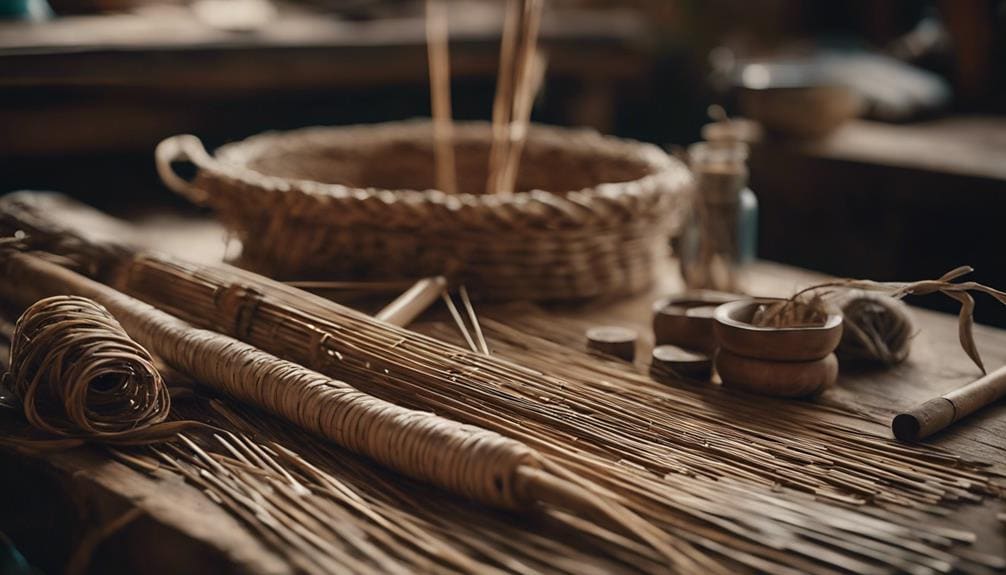
To embark on the journey of basket weaving, one must first acquaint oneself with basic techniques such as coiling and twining, laying a solid foundation for mastering this craft. Having the right tools is essential when starting basket weaving.
Basic tools like a weaving needle, scissors, and a sturdy base to hold the weaving in place are indispensable. Understanding different weaving patterns is crucial for creating beautiful and structurally sound baskets. Experimenting with patterns such as checkerboard, twill, or wicker can add depth and complexity to your creations.
As a novice weaver, starting with simple patterns before progressing to more intricate designs is beneficial. This approach allows for gradually improving skills and a better grasp of weaving techniques.
Additionally, exploring various weaving styles like plaiting and randing can offer your projects a diverse range of possibilities. Remember, practice is key to honing your craft, so don’t be afraid to start small and gradually challenge yourself as you grow more confident in your abilities.
Frequently Asked Questions
What Is the Difference Between Rattan and Reed?
The difference between rattan and reed lies in their composition and characteristics. Rattan is solid and sturdy, ideal for structural support, while reed is flexible and delicate, perfect for intricate weaving. Both natural materials offer unique qualities for sustainable, eco-friendly designs.
What Is Reed and Cane Basket?
Reed basketry involves weaving with stiff fibers like phragmites or sedges to create sturdy containers. Cane weaving, on the other hand, uses the pliable rattan vine for flexible and intricate designs. Both techniques showcase diverse textures and styles.
How Long to Soak Reeds for Basket Weaving?
Soaking reeds is crucial for basket weaving. Soak rattan cane and rush reeds for at least 30 minutes to make them flexible. Longer times may be needed for thicker reeds. Properly soaked reeds ease weaving.
Where Does Cane for Baskets Come From?
Cane for baskets comes from the rattan palm, which is sustainably harvested in tropical regions. Processing enhances its durability. Rattan’s strength and flexibility make it ideal for weaving. It’s a natural choice due to its sustainable sourcing and eco-friendly impact.
Conclusion
As I weave through the intricate world of basketry, I am reminded of the delicate balance between tradition and innovation, nature and artistry. Like the rush reeds and rattan cane that intertwine to create beautiful pieces, our lives are a tapestry of experiences and choices. Embracing the sustainability and functionality of natural materials, basketry is not just a craft but a reflection of our connection to the earth and our ability to create beauty from simplicity.

